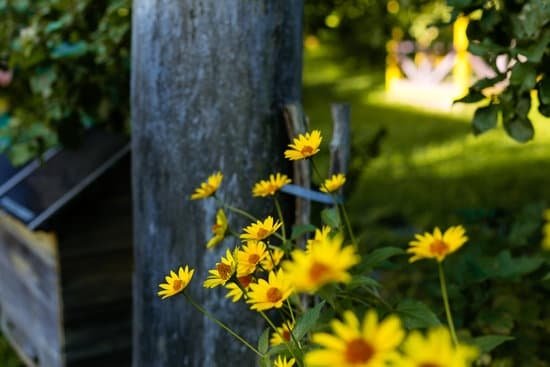Are you looking for fresh and healthy produce right at your doorstep? If so, exploring home vegetable gardening ideas could be the perfect solution for you. In this article, we will delve into the world of growing your own vegetables in the comfort of your own home.
Home vegetable gardening offers a plethora of benefits beyond merely having access to organic produce. By cultivating your vegetables, you can ensure they are free from harmful pesticides and chemicals. Additionally, it allows you to connect with nature, reduce your carbon footprint, and save money on groceries in the long run.
When it comes to selecting the right vegetables for your garden, factors such as climate, available space, and personal preferences all come into play. From tomatoes and cucumbers to leafy greens like lettuce and kale, there is a wide variety of options to choose from based on what suits your needs and tastes best. Stay tuned as we explore how to plan your vegetable garden layout effectively in the upcoming sections.
Benefits of Growing Your Own Vegetables
Growing your own vegetables at home comes with a multitude of benefits that go beyond just having access to fresh produce. One of the most significant advantages is the control you have over what goes into your food.
By growing your own vegetables, you can ensure that no harmful chemicals or pesticides are used in the cultivation process, leading to healthier and more nutritious produce for you and your family to enjoy. Additionally, home vegetable gardening allows you to experiment with different varieties and flavors that may not be readily available in stores.
Health Benefits
Homegrown vegetables are not only fresher but also more nutrient-dense compared to store-bought options. Vegetables that are harvested from your garden retain higher levels of vitamins and minerals since they are consumed soon after picking. This means that you can maximize the health benefits of these vegetables by incorporating them into your daily meals, supporting overall well-being and immunity.
Cost Savings
Another compelling reason to start a home vegetable garden is the potential for significant cost savings in the long run. While there may be initial investments in tools, seeds, and soil amendments, the amount of money saved on grocery bills can quickly outweigh these expenses.
By producing your own vegetables, you reduce dependency on store-bought produce, ultimately decreasing expenses related to purchasing fruits and vegetables regularly. Additionally, surplus harvests can be preserved through freezing, canning, or pickling for future use, extending the financial benefits even further.
Choosing the Right Vegetables for Your Garden
When it comes to home vegetable gardening ideas, one of the most crucial decisions you’ll make is choosing the right vegetables to grow in your garden. Whether you’re a beginner or a seasoned gardener, selecting the best vegetables for your climate, soil type, and available space can make a significant impact on your gardening success.
Consider Your Preferences and Needs
Before you start planting seeds or seedlings, think about what vegetables you and your family enjoy eating. Consider incorporating a mix of familiar favorites like tomatoes, peppers, and cucumbers with some new and interesting varieties to keep things exciting. Additionally, factor in dietary preferences or restrictions when selecting vegetables to grow in your garden.
Assess Your Growing Conditions
Not all vegetables thrive in the same growing conditions. Some plants require full sun exposure while others can tolerate partial shade. Take note of how much sunlight your garden receives throughout the day and choose vegetables that are suited for those light conditions.
Additionally, consider factors such as soil quality, drainage, and water availability when deciding which vegetables to plant. Researching the specific needs of each vegetable will help you determine if they are a good fit for your garden space.
Planning Your Vegetable Garden Layout
When it comes to planning your vegetable garden layout, there are several key factors to consider. First and foremost, take into account the amount of space you have available for your garden. Whether you have a small backyard or a larger plot of land, optimizing the layout can maximize your vegetable production. Consider grouping vegetables with similar water and sunlight needs together to make maintenance easier.
Another important aspect of planning your vegetable garden layout is to consider plant spacing and placement. Some vegetables require more room to grow and spread out, while others can be planted closer together. Proper spacing not only ensures healthy growth but also prevents overcrowding that can lead to disease and pest issues.
In addition to spacing, think about accessibility in your vegetable garden layout. Make sure pathways are wide enough for easy navigation and maintenance tasks like weeding and harvesting. Raised beds or vertical gardening techniques can also help make the most of limited space while keeping your garden organized and visually appealing. With careful planning, you can create a functional and beautiful vegetable garden that suits your needs.
| Vegetable | Spacing |
|---|---|
| Tomatoes | 24-36 inches apart |
| Carrots | 2-3 inches apart |
| Zucchini | 3-4 feet between rows |
Essential Tools and Supplies for Home Vegetable Gardening
When starting a home vegetable garden, it is essential to have the right tools and supplies to ensure your plants thrive. Here are some must-have items to consider adding to your gardening arsenal:
- Gardening Gloves: Protect your hands from thorns, sharp edges, and dirt by investing in a durable pair of gardening gloves.
- Hand Trowel: A hand trowel is perfect for digging small holes for planting seedlings or removing weeds around your vegetables.
- Garden Hoe: Use a garden hoe to break up soil, remove weeds, and create furrows for planting seeds.
In addition to tools, there are specific supplies that can help you get the most out of your home vegetable garden:
- Organic Fertilizer: Keep your vegetables healthy and nourished with organic fertilizers that provide essential nutrients without harmful chemicals.
- Mulch: Mulch helps retain moisture in the soil, suppresses weed growth, and adds nutrients as it breaks down over time.
- Irrigation System: Consider installing a drip irrigation system or soaker hoses to efficiently water your garden without wasting resources.
By having the right tools and supplies on hand, you can set yourself up for success in cultivating a thriving home vegetable garden.
Remember that investing in quality tools and supplies upfront can lead to long-term benefits for your garden. With the proper equipment at your disposal, you’ll be well-equipped to tackle any challenges that may arise while growing your own fresh produce at home. Start gathering these essential tools and supplies today to kickstart your home vegetable gardening journey.
Seasonal Planting Guide for Different Vegetables
When it comes to home vegetable gardening ideas, understanding the seasonal planting guide for different vegetables is essential for a successful harvest. By planting your vegetables at the right time, you can maximize their growth potential and yield. Here is a seasonal planting guide to help you plan your garden throughout the year:
- Spring: In spring, it’s a great time to plant cool-season vegetables like lettuce, peas, carrots, and radishes. These veggies thrive in the mild temperatures of spring and can be harvested before the heat of summer sets in.
- Summer: As the temperatures rise in summer, it’s time to plant warm-season vegetables such as tomatoes, peppers, cucumbers, and zucchini. Make sure to provide adequate water and sun protection for these sun-loving plants.
- Fall: Fall is perfect for planting a second round of cool-season crops like spinach, kale, broccoli, and cauliflower. Take advantage of the cooler weather to extend your harvest into the autumn months.
By following this seasonal planting guide, you can ensure a continuous supply of fresh produce from your home vegetable garden all year round. Remember to consider your local climate and frost dates when planning your planting schedule.
Pest Control and Disease Prevention in Home Vegetable Gardens
Implementing pest control measures and disease prevention strategies is crucial for maintaining a healthy home vegetable garden. Here are some tips to protect your crops from common threats:
- Rotate your crops each season to reduce soil-borne diseases and pests that may target specific types of vegetables.
- Inspect your plants regularly for signs of pest infestations or disease symptoms. Early detection can help prevent further damage to your garden.
- Practice companion planting by growing certain plants together that repel pests or attract beneficial insects. For example, marigolds can deter nematodes, while basil can help repel mosquitoes.
By staying vigilant and implementing preventive measures early on, you can enjoy a thriving home vegetable garden without resorting to harmful chemicals or pesticides. Remember that a healthy garden starts with proactive care and attention to detail.
Pest Control and Disease Prevention in Home Vegetable Gardens
Maintaining a healthy vegetable garden requires diligent pest control and disease prevention measures. One effective way to combat pests is through companion planting, where certain plants are grown together to deter harmful insects or attract beneficial ones. For example, planting marigolds around your vegetables can help repel nematodes and other pests. Additionally, introducing natural predators like ladybugs or praying mantises can keep insect populations in check without the need for harmful chemicals.
In terms of disease prevention, practicing crop rotation is crucial to reduce the risk of soil-borne diseases. By planting different types of vegetables in the same area each season, you can prevent the build-up of pathogens specific to certain plant families. Maintaining proper spacing between plants also improves air circulation and reduces humidity levels, which are key factors in preventing fungal diseases like powdery mildew or blight.
Implementing integrated pest management (IPM) strategies is essential for sustainable pest control in home vegetable gardens. This approach focuses on using a combination of cultural, biological, and mechanical methods to address pest issues while minimizing environmental impact. From regularly inspecting your plants for signs of pests or diseases to employing organic pesticides as a last resort, IPM offers a holistic and eco-friendly approach to keeping your home vegetable garden thriving.
| Pest Control Tips | Disease Prevention Methods |
|---|---|
| Companion planting | Crop rotation |
| Natural predators introduction | Proper spacing between plants |
| Integrated Pest Management (IPM) | Regular inspection for signs of pests or diseases |
Creative Container Gardening Ideas for Urban Dwellers
Living in urban areas with limited outdoor space doesn’t have to stop you from enjoying the benefits of home vegetable gardening. Container gardening is a fantastic solution for urban dwellers who want to grow their own produce. This method allows you to cultivate vegetables, herbs, and even fruits in pots, hanging baskets, or other containers on balconies, patios, or window sills. With some creativity and planning, you can still enjoy a bountiful harvest right at home.
When it comes to container gardening for vegetables, selecting the right containers is crucial. Choose pots or containers that are large enough to accommodate the root systems of the plants you intend to grow. Make sure they have drainage holes at the bottom to prevent waterlogging, which can cause root rot. Additionally, consider the weight of the containers when filled with soil and mature plants, especially if you’re placing them on balconies or elevated surfaces.
One of the key advantages of container gardening is that it allows for greater flexibility in terms of placement and mobility. You can easily move your containers around to optimize sunlight exposure or protect your plants from harsh weather conditions or pests. Consider vertical gardening options by using trellises or hanging planters to maximize space and grow vining crops like tomatoes or cucumbers vertically.
Get creative with your choice of containers – repurpose old buckets, crates, or even shoes into unique planters for a touch of personality in your urban garden. Whether you have a small balcony or just a sunny windowsill, there are plenty of creative ways to incorporate home vegetable gardening ideas into your urban living space.
Sustainable Practices in Home Vegetable Gardening
Home vegetable gardening is not only a rewarding hobby but also a sustainable practice that can benefit both the environment and your health. By growing your own vegetables at home, you can reduce your carbon footprint by decreasing the need for transportation of produce from farm to table. Additionally, home vegetable gardens promote biodiversity and provide habitats for beneficial insects and pollinators, contributing to ecosystem health.
One of the key sustainable practices in home vegetable gardening is composting. Composting kitchen scraps and garden waste can create nutrient-rich soil for your plants, reducing the need for chemical fertilizers. By recycling organic matter back into the soil, you are closing the loop in the natural cycle of nutrients and promoting soil health in your garden. This simple practice not only reduces waste sent to landfills but also helps conserve resources and energy used in producing synthetic fertilizers.
Another important sustainable practice in home vegetable gardening is water conservation. Implementing drip irrigation systems or rain barrels can help you use water efficiently in your garden. Mulching around plants helps retain moisture in the soil, reducing the frequency of watering needed.
By being mindful of water usage and adopting practices that minimize water waste, you can ensure that your home vegetable garden remains sustainable for years to come. Incorporating these sustainable practices into your gardening routine will not only benefit the environment but also lead to a more productive and thriving vegetable garden.
Conclusion
In conclusion, home vegetable gardening is a fulfilling and rewarding activity that offers numerous benefits to individuals and families. By growing your own vegetables, you can enjoy fresh produce right from your backyard, free from harmful chemicals often found in store-bought options. Not only does it promote healthier eating habits, but it also allows you to save money in the long run.
When choosing the right vegetables for your garden, consider your location, climate, and available space. A well-planned vegetable garden layout is crucial for maximizing yield and minimizing maintenance. Investing in essential tools and supplies will make the gardening process more efficient and enjoyable.
Whether you have a spacious backyard or live in an urban setting with limited space, there are creative container gardening ideas that cater to every need. Embracing sustainable practices such as composting, water conservation, and natural pest control methods will not only benefit your garden but also the environment. So why wait? Start your home vegetable garden today and embark on a journey of self-sufficiency and green living.
Frequently Asked Questions
What Vegetables Are Best to Grow at Home?
Growing vegetables at home can be a rewarding experience, especially if you choose easy-to-grow options like tomatoes, lettuce, peppers, cucumbers, and zucchini. These vegetables thrive in a variety of climates and are perfect for beginners with limited gardening experience.
What Is the Best Layout for a Vegetable Garden?
When planning the layout for a vegetable garden, it’s important to consider factors like sunlight exposure, water accessibility, and spacing between plants. A common layout is the traditional row method, where vegetables are planted in straight lines with pathways in between for easy access. Raised beds are also popular as they provide good drainage and organization.
What Are the 10 Easiest Vegetables to Grow?
Some of the easiest vegetables to grow include cherry tomatoes, radishes, green beans, spinach, and carrots. These vegetables are resilient to common garden pests and diseases, making them ideal choices for novice gardeners looking for low-maintenance options. Additionally, herbs like basil and mint are simple to cultivate and can be enjoyed fresh in cooking.

Welcome to my gardening blog! I am passionate about plants and enjoy sharing my knowledge and experiences with others. In this blog, I will write about everything related to gardening, from tips on how to get started to updates on my own garden projects.





